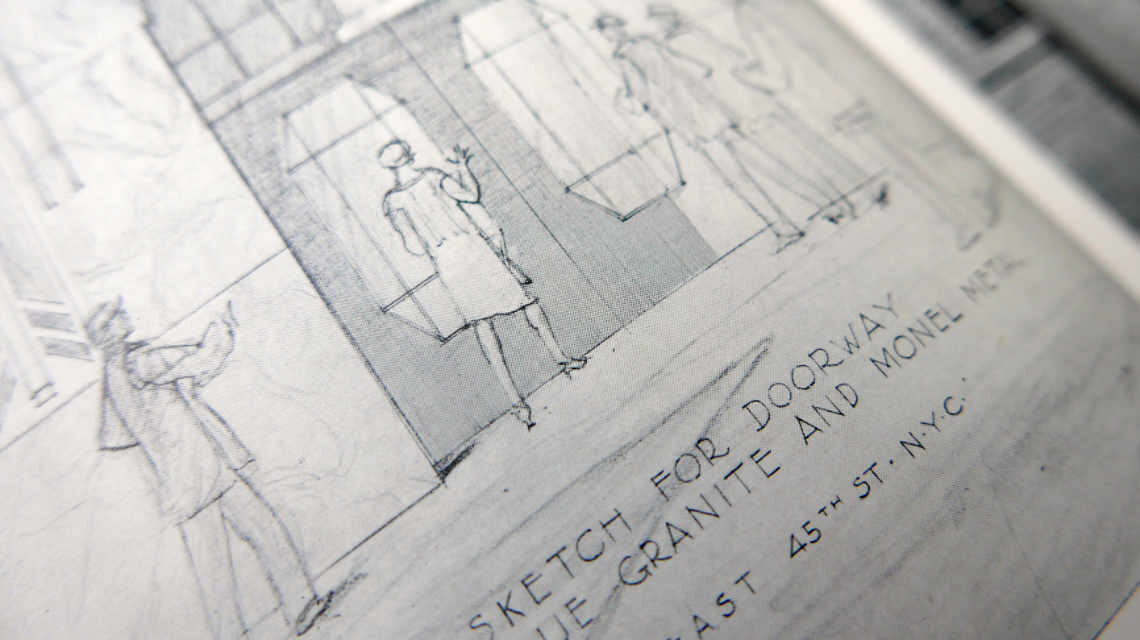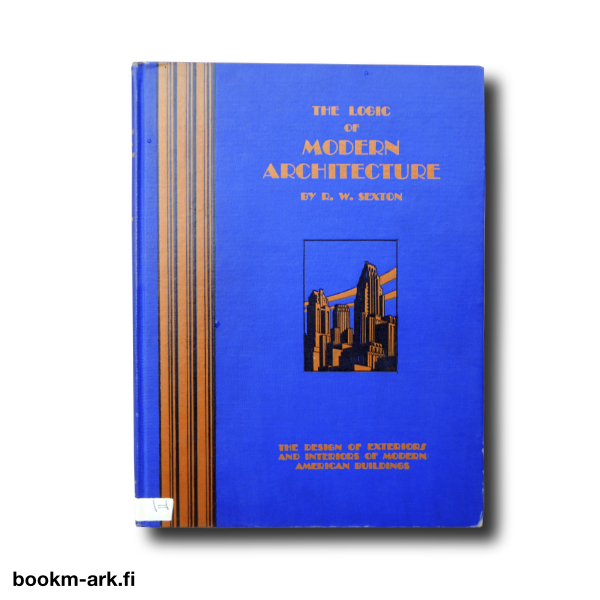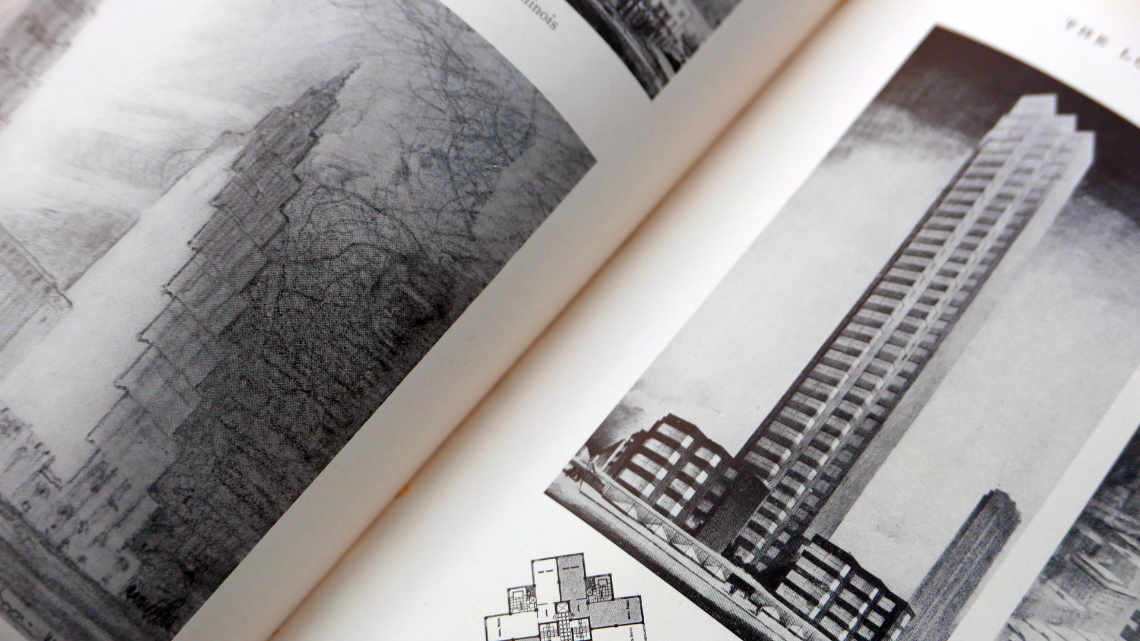Vintage Architecture Book of the Month: The Logic of Modern Architecture 1929 07.01.2020 – Posted in: Book Thoughts
“If we are not modern, what are we?” This is the opening phrase of R. W. Sexton’s The Logic of Modern Architecture which opens my new blog series Vintage Architecture Book of the Month. In 2020, from January to December, I’ll pick up one book from our antiquarian collection and write a short review about it for you. Nothing fancy or overly scholarly, but as old books have certain appeal and in architecture theory, there’s no such thing as the absolute truth, I thought it might be entertaining to take a deeper look into the strange world of old books and their historical – or outdated, for that matter – value. So let’s roll! “If we are not modern, what are we?”
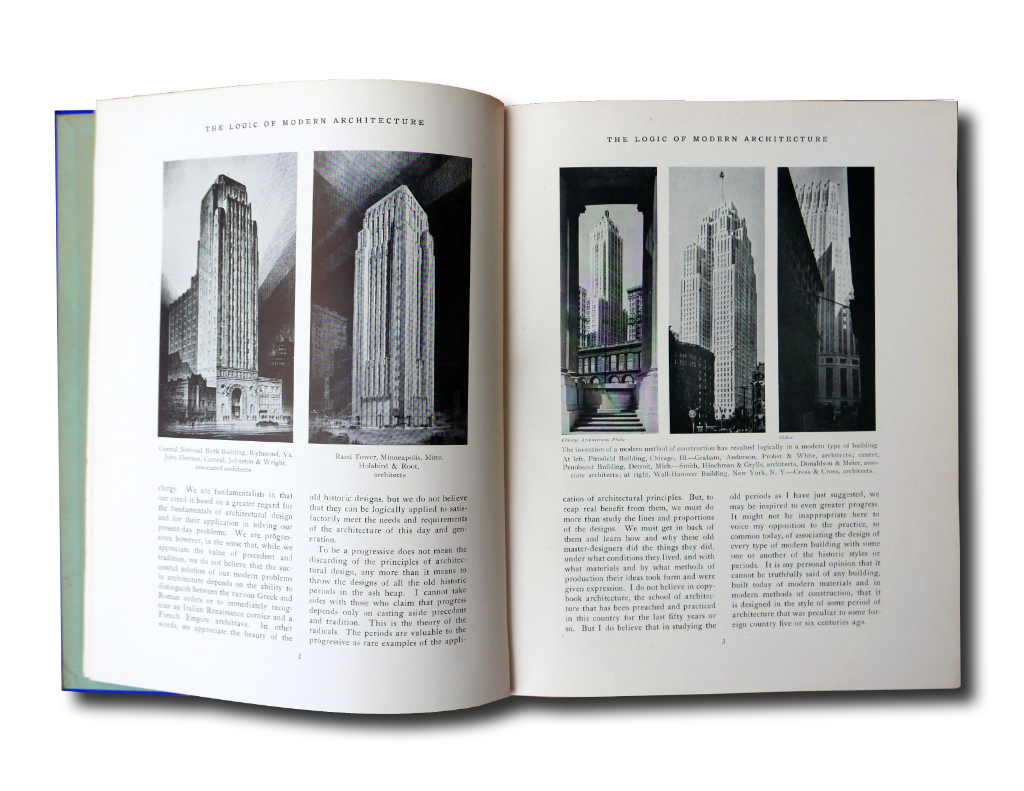
Modern or Progressive?
The Logic of Modern Architecture – The Design of Exterior and Interiors of Modern American Buildings was published in New York in 1929. There isn’t much information available about the author, Randolph Williams Sexton but he appears to have been a prolific critic; his previous books listed on the title page are American Apartment Houses (1926), American Theatres of Today (1927), Interior Architecture (1927), American Commercial Buildings of Today (1928), and Hotels, and Apartment Hotels of Today (1929).
The contents is divided into five chapters: Modern or Progressive; The Psychology of Architecture; The Fundamentals of Architectural Design Applied to Solving Our Modern Problems; Our Architecture Today; and Furnishing the Modern Interior. There are plenty of black-and-white photographs and architectural drawings that depict all forms of modern buildings: skyscrapers, office and commercial buildings, theatres, factories, apartment houses and private houses.
Sexton is definitely a reformer: he disparages the so-called copybook architects who only call themselves modernists but in practice only copy European architecture and offer “them as their contribution to modern American art.” (p. 5). His point is to let go of the old neo-classical styles and invent a new way of thinking about architecture – distinctively American architecture fit for the modern American lifestyle: “We appreciate the beauty of the old historic designs, but we do not believe that they can be logically applied to satisfactorily meet the needs and requirements of the architecture of this day and generation.” (p. 7). Here he comes surprisingly close to Horatio Greenough (1805–1852) who in American Architecture (1843) warned his contemporaries of make-believe architecture: “let us imitate [the Greek masters] like men, and not ape them like monkeys.”
Sexton concludes his considerations of the modern style by quoting Eliel Saarinen:
The Greeks did not build in the Greek style, as we sometimes say. While the Greeks built, their style grew – their modern art.
– Eliel Saarinen quoted by R. W. Sexton in The Logic of Modern Architecture (1929), p. 16
The Psychology of Architecture: Modern Problem-Solving
Sexton continues his sharp analysis by introducing the principles of how architecture affects people and how it responses to the human needs and senses. “We are living in an age when almost any desire which the human mind may crave can be satisfied” Sexton writes (p. 21). The psychologically-minded architect places the most stress on beauty, economy and the impulses, feelings and needs of the client.
Sexton underlines the logical method of developing designs; only then can the building become a well reasoned composition as a whole. Sexton’s principle elements are the purposeful plan and the design that reflects the purpose. “The successful commercial building will suggest an air of business in its every detail… the architectural design of a bank should reflect security, stability and dignity, while the theatre should carry in its design certain definite suggestions of the drama”. (p. 51)
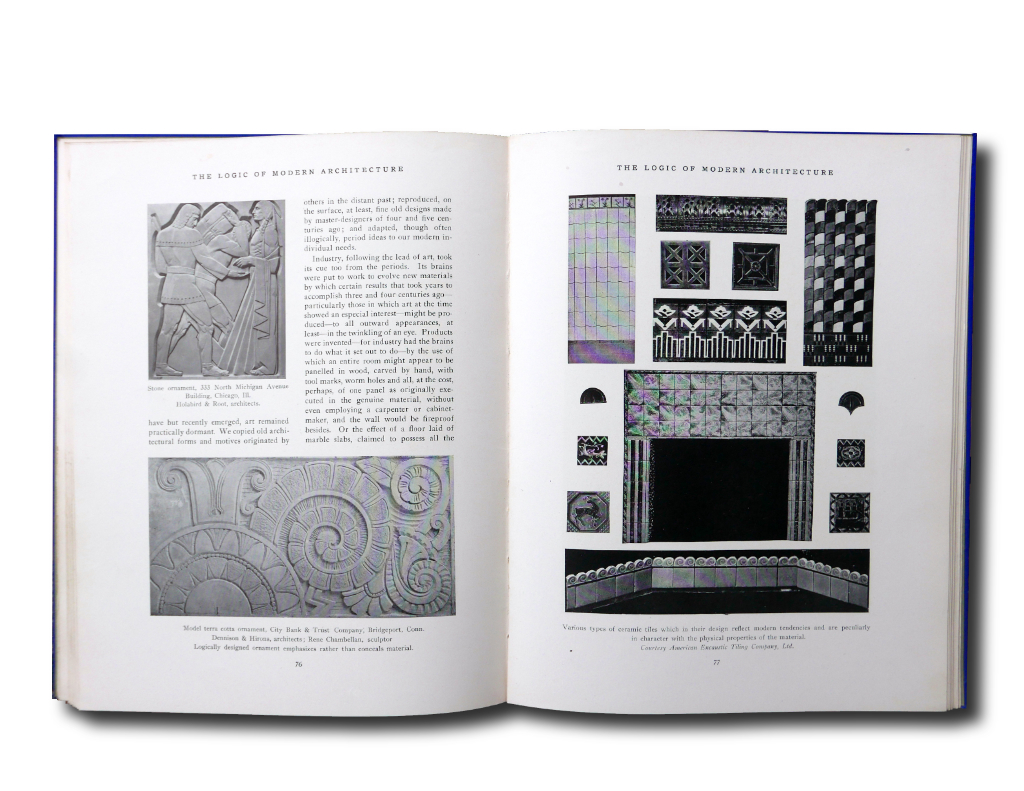
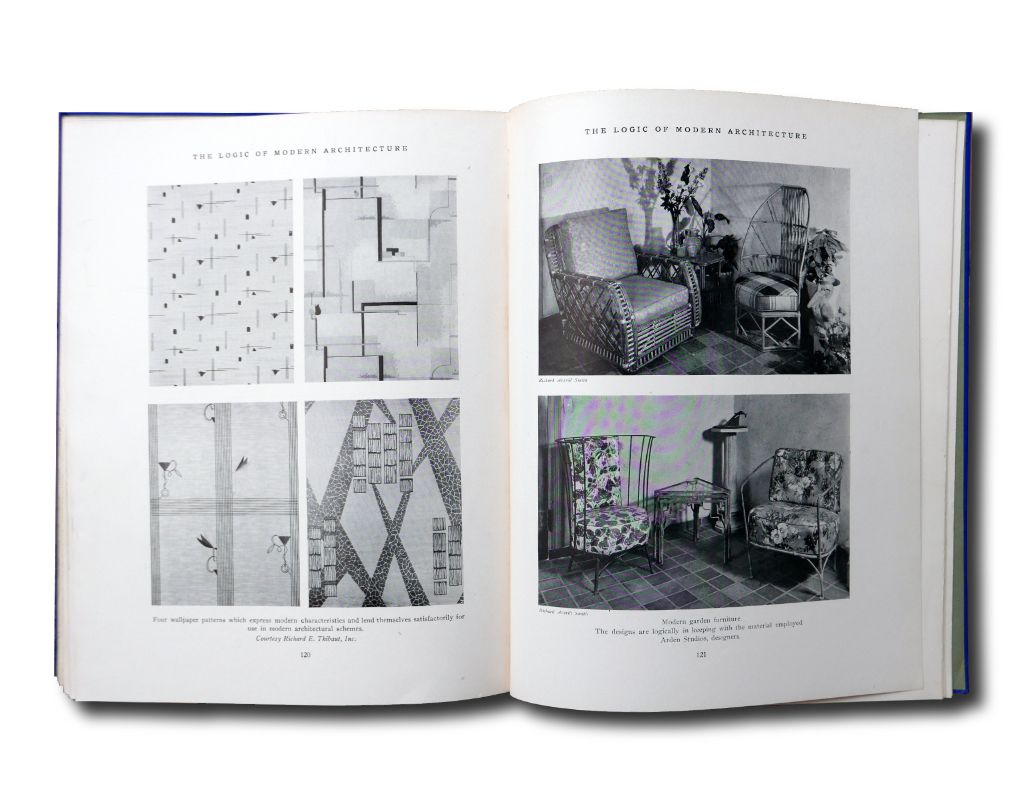
We Demand Beauty in Architecture
The Logic of Architecture is an attractive and highly accessible book clearly written as an introduction to the principles of architecture from all sides considered. Sexton’s approach is very pragmatic: the modern architect is amidst a sea of clashing interests, so the only way forward is to keep cool and carry on making Architecture. Let go of past believes and exercise the art of building logically and with great care in giving expression to the modern ways of living, he seems to suggest. Not a bad idea for us moderns of the 2020s, either.
The architecture of today must be tested by its adherence to the true principles of design – rather than by its likeness to the details of historical precedent. It is the spirit rather than the precise form which is of supreme importance.
Report of the Board of Directors, American Institute of Architects, 1929; quoted by R. W. Sexton in The Logic of Modern Architecture (1929), Foreword.
PS.
Our copy of R. W. Sexton’s The Logic of Modern Architecture is an ex-library copy and it originates from the Helsinki University of Technology, Department of Architecture collections. If you’re interesting in buying this book or you’d like to have further information about it, please get in touch.

